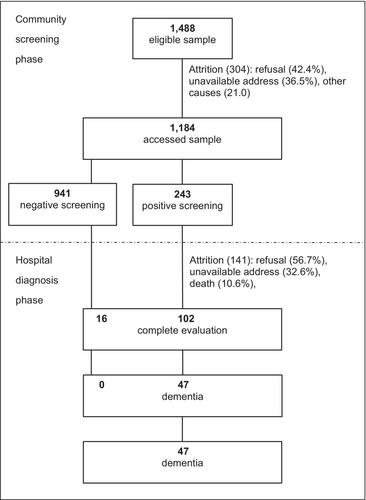The impact of education as a proxy for lifestyle habits on reducing the association with dementia prevalence in the Southern Region of Brazil
Abstract
Objectives
This study aimed to investigate the prevalence of dementia among older adults from Florianópolis, in the Southern Region of Brazil.
Methods
Data were originally drawn from the Epifloripa Aging Cohort Study, a representative and community-based survey designed to evaluate older people's health. This cross-sectional study was conducted in two phases: the community-screening phase, in which the Mini-Mental State Examination and a multifunctional scale were administered to older subjects and close informants, respectively; and the hospital-diagnosis phase, when the Cambridge Examination and the National Institute on Aging criteria were used. Adjustment for screening accuracy was made in order to estimate dementia prevalence.
Results
Of 1184 subjects evaluated in the community, 243 were screened for the diagnosis phase, in which 47 were identified with dementia, resulting in a crude prevalence of 4.5% (95% CI: 3.241–5.758) and an estimated prevalence of 9.2% (95% CI: 7.446–10.954). Dementia was associated with older ages, lower education levels, and the presence of stroke. Mild alcohol use (in comparison with no alcohol use), community-group practice, internet use and a higher level of physical activity, rather than education, decreased the odds ratio for dementia. Education was directly associated with these lifestyle habits.
Conclusions
Prevalence was lower than that in previous studies in the country, and multivariate analysis reinforced the importance of lifestyle in preventing cognitive disorders in the older population.


 求助内容:
求助内容: 应助结果提醒方式:
应助结果提醒方式:


